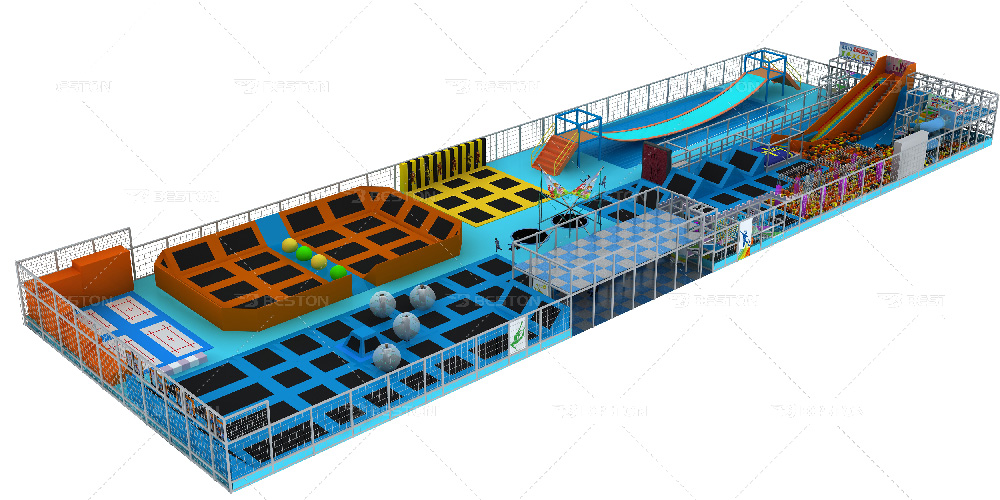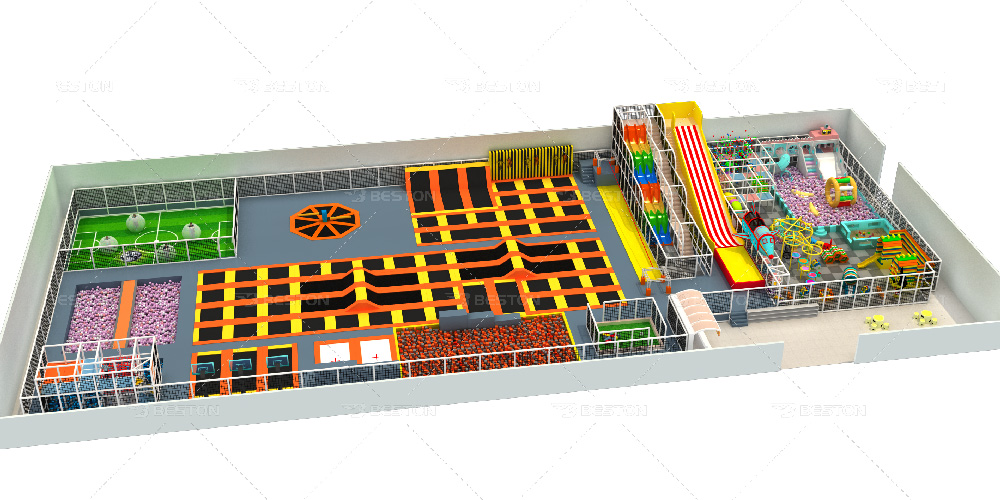Start a New Trampoline Park Business
Starting a trampoline park business can be an exciting and lucrative venture, but it also requires careful planning, dedication, and attention to detail. In this guide, we’ll explore the key steps and considerations involved in launching your trampoline park business.
Step 1: Market Research
Before diving into the trampoline park business, conduct thorough market research. Analyze the demand for such an entertainment facility in your area. Identify your target audience, such as families, teenagers, or fitness enthusiasts. Understand your competition, both direct (other trampoline parks) and indirect (other entertainment options). This research will help you make informed decisions regarding location, park size, pricing, and marketing strategies.

Step 2: Business Plan
Develop a comprehensive business plan that outlines your goals, strategies, and financial projections. Include details about the park’s location, size, design, and potential additional services like party rooms or a café. Define your brand and mission. Calculate your startup costs, including equipment, insurance, permits, and initial marketing expenses. Your business plan will serve as a roadmap and can be crucial when seeking financing or investors.
Step 3: Location and Permits
Choosing the right location is crucial for the success of your trampoline park. Look for areas with high foot traffic, easy accessibility, and proximity to your target audience. Check local zoning regulations and obtain the necessary permits and licenses for your trampoline park business. Consult with an attorney or local business development resources to ensure compliance with all legal requirements.
Step 4: Facility Design and Equipment
Design your trampoline park layout with safety, fun, and functionality in mind. Buy high-quality trampoline park equipment, padding, and safety netting. Consider additional features like foam pits, dodgeball courts, basketball hoops, and obstacle courses to attract a diverse range of customers. Work with professional designers and architects to create a visually appealing and safe environment.

Step 5: Safety Measures and Training
Safety is a top priority in a trampoline park. Implement strict safety protocols, including rules and guidelines for customers. Train your staff in first aid and CPR. Ensure that all equipment is regularly inspected and maintained. Consider liability insurance to protect your business from potential accidents or injuries.
Step 6: Marketing and Promotion
Develop a marketing strategy to attract customers to your trampoline park. Utilize online and offline marketing channels, including social media, a professional website, email marketing, and partnerships with schools and local businesses. Offer promotions, discounts, and special events to create buzz and attract a steady flow of customers. Engage in community outreach and connect with potential customers through local events and sponsorships.
Step 7: Staffing and Training
Hire a team of trained and enthusiastic staff to manage your trampoline park. This includes front desk staff, court monitors, and party hosts. Provide comprehensive training on safety procedures, customer service, and emergency response. A friendly and competent staff contributes to the overall customer experience.
Step 8: Financial Management
Maintain a strong financial management system to track expenses, revenue, and profit margins. Invest in a reliable point-of-sale system to streamline transactions. Plan for ongoing operational costs, including employee wages, equipment maintenance, rent, utilities, and insurance. Periodically review your financial reports to identify opportunities for improvement and growth.
Step 9: Customer Experience
Focus on delivering an exceptional customer experience. Cleanliness, organization, and excellent customer service are critical. Create a welcoming and entertaining atmosphere where customers feel safe and have fun. Encourage customer feedback and continuously improve your services based on their suggestions.
Step 10: Growth and Expansion
As your trampoline park business grows, consider expansion opportunities. This may include opening additional locations, adding new attractions or services, or franchising your concept. Stay updated on industry trends and innovations to remain competitive and offer exciting experiences to your customers.
Starting a trampoline park business can be a rewarding journey, offering a fun and active entertainment option to your community. If you want to know more about the business, you can go to www.bestonamusementparkrides.com. With careful planning, attention to safety, and a focus on delivering a memorable customer experience, your trampoline park can become a successful and thriving business.